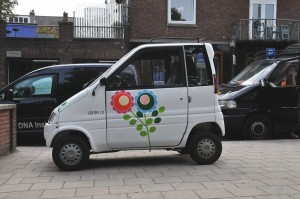The Dutch are a normally quite easy-going people, but that all changes in the run-up to New Years Eve.
Fireworks are normally banned in the Netherlands, but a few days before New Years Eve, it is legal to sell fireworks. Between 10pm on New Years Eve until 2am the next morning, it is also legal to set them off.
During the week leading up to New Years Eve, it was clearly apparent that not that many people were actually following the law all that well.
Leading up to New Years Eve, the amount of bangs grew progressively worse, despite it not being legal to set off fireworks yet. I love fireworks, but hearing a continuous invasion of noise is not that pleasant.
As the clock struck 12 on the 31st of December, the real fun started, and I was not prepared for what I experienced.
The entire neighbourhood erupted in a continous display of light and noise for a solid hour. The sheer scale of the fireworks was far beyond even the professional displays I have seen in the past, and this was just backyard fireworks.
The Dutch spent about 64 million euros on fireworks, which is an astounding figure in my mind.
The entire thing just strikes me at being at odds with the normal Dutch personality that made this experience all the more heightened for me
